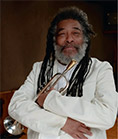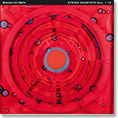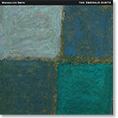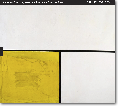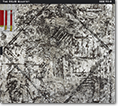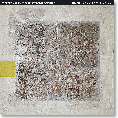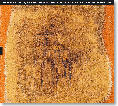JUHANI AALTONEN TRIO
Sometimes conversations stick to your mind for no particular or obvious reason. I had one such conversation with the drummer extraordinaire and sometime parliamentarian Reino Laine some 25 years ago when he, after a few glasses of red wine, lamented the fact that "Nobody makes beautiful albums anymore - albums that are just beautiful to listen to without any showing off, passing on a message or some other ulterior motive." His reference point was, as was to be expected from Finland´s leading disciple of Elvin Jones and a lifelong admirer of John Coltrane, the Ballads album by the classic John Coltrane Quartet.
For some reason, I have always remembered this comment and sometimes thought of it when listening to new records. It seemed to me at the time, and still does, that there was much truth to Laine´s observation. At some point, it became unacceptable for a "serious" improvising musician to record music simply for the sake of presenting something beautiful or, even worse, easily approachable. Still, although Ballads may not be John Coltrane´s greatest or most historic recording, it may, for many of us, be one of the albums that we most often go back to. And it is difficult to see any fault in that.
As happened to so many others as well, in the heady days of the late 1960s and the early 1970s, Juhani Aaltonen was pigeonholed as a "free jazz" player, although, in fact, he was one of the most versatile musicians on the Finnish music scene playing everything from jazz and progressive rock to dance music and studio jingles - often simply to support his family. Truth be told, Aaltonen was - and is - fond of free improvisation and some of the most memorable early moments involving Finnish jazz musicians playing within that genre featured him in a prominent role, including a trio recording with Norwegian bassist Arild Andersen and drummer Edward Vesala (Nana, Blue Master) in 1970 and a recording by the German-Finnish Jazz Workshop with saxophonist Peter Brötzmann, bassist Peter Kowald and Edward Vesala (Hot Lotta, Blue Master) in 1973. However, just as Vesala, Aaltonen soon moved forward from the more extreme expressions of "freedom," with free improvisation becoming a tool rather than a goal in itself.
During this period, Aaltonen and Vesala often practiced together seeking to reflect moods rather than pre-conceived compositions - they might set out to play "angry" or to play "happy" or "sad." They also began to approach standard material using their own style of playing and its new-found freedom. Already in this period, they studied and played, for example, "But Not For Me" and "Stella By Starlight" with the former even being included as a trio version (with bassist Pekka Sarmanto) on Juhani Aaltonen´s first album as a leader (Etiquette, Love Records) in 1974. That a version of "But Not For Me" is also included on this recording, creates a link to that album from more than 30 years ago that is anything but coincidental.
Now, just as then, a strong melody is always important to Aaltonen. "I often feel that a bad, uninteresting melody makes me a bad, uninteresting player," he says. "A strong melody is like a fascinating story that enables you to pick up on it - to develop and embellish the theme and to make the story your own. A ballad also allows you more time to reflect on the story and to tell it in your own way. It is almost like a paining that you can focus on and study trying to figure out what really is going on there and then put that in your own words - in music."
Juhani Aaltonen´s love of a strong melody is also evident in the examples that he mentions when asked about his favorite ballad players in jazz. In addition to the ever-important John Coltrane, Aaltonen brings up Johnny Hodges and Ben Webster, who both caught his ear early in his career due to their ability to tell a story and to color and shade a melody in various ways. None of the three has affected Aaltonen´s unique, personal sound in any obvious way but each, in his own manner, has influenced his approach to, and also the selection of, this recording´s material. Similarly, Aaltonen mentions his long-standing co-operation with pianist Heikki Sarmanto, who is a master of simple, singing melodies, and his love of Italian opera arias. "Generally, the music that appeals to me the most is that with a strong melody," he says. "Something that goes straight to your heart and touches you inside in ways that even you cannot understand or explain."
When selecting material for this recording, the basic premise was to feature ballads that have been important to Aaltonen over the years and to supplement them with others that would fit in well with that basic repertoire. For example, two classic compositions by Ornette Coleman, "Broken Shadows" and "Lonely Woman," were included, as the members of the trio felt that they were particularly compatible with the album´s overall approach and tone. Aaltonen feels that Coleman is not only a master composer but particularly ingenious in crafting ballads. "There is a certain sensitivity, a tenderness with an underlying sadness, that is truly moving. Maybe, it is the Finnish tendency towards melancholy that makes us especially receptive to Coleman´s balladic compositions."
Despite the choice of material, the idea behind this collection was not, however, to necessarily soften the trio´s general approach. In fact, Aaltonen´s instruction to his band mates in the studio was just the opposite when, at the outset of the first day of recording, he instructed them to play the music strong and without compromises while retaining "an illusion of a ballad." And that is exactly what all three of them did. Now, it remains to be seen whether this recording - finally - satisfies Reino Laine´s yearning for a "beautiful album." I suppose that it may.
Helsinki, January 8, 2006
Petri Haussila

